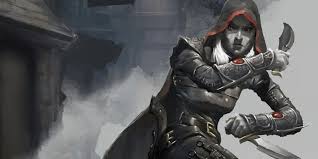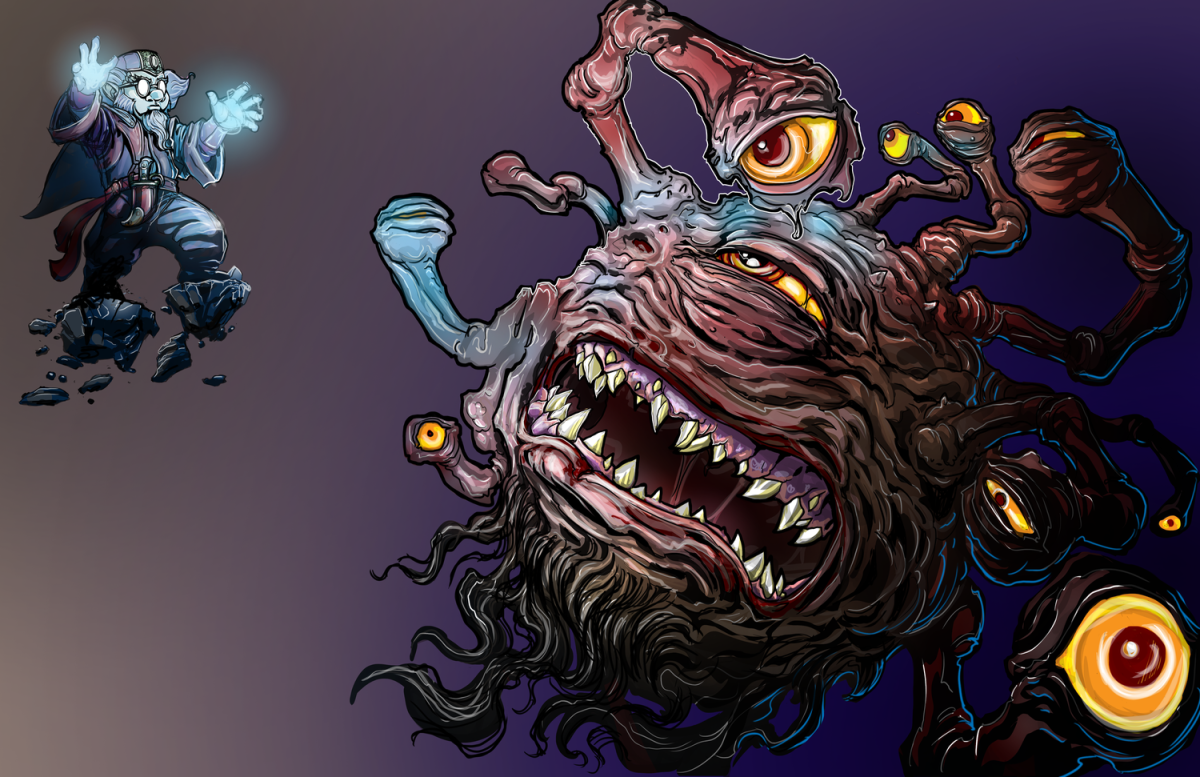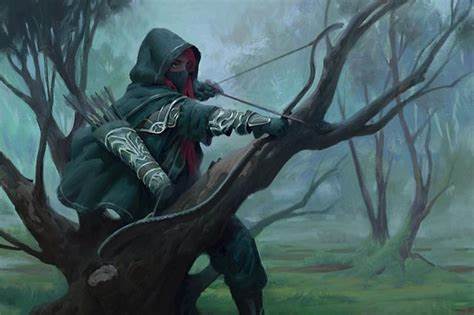The Rogue is a classic Dungeons & Dragons character known for their agility, stealth, and cunning. In D&D 5E, Rogues are experts in dealing quick, precise damage while dodging attacks, staying hidden, and disabling traps. They’re incredibly versatile, capable of shining in both combat and non-combat scenarios. If you’re new to D&D or just looking to master the Rogue class, this guide will give you everything you need to create a memorable and effective Rogue.
What is a Rogue in D&D 5E?
Rogues are the quintessential skill specialists, excelling in stealth, sleight of hand, and deception. They rely on agility, cunning, and strategy rather than brute strength or magical powers. In combat, Rogues rely on Sneak Attack to deal extra damage and on Evasion and Uncanny Dodge to minimize incoming damage, making them powerful, nimble fighters who strike fast and hard.
Rogues are ideal for players who want to outwit their enemies, solve puzzles, and play skillfully both in and out of combat. From thieves and assassins to masterminds and arcane tricksters, Rogues offer plenty of variety in playstyle and build options.
Step-by-Step Guide to Creating a Rogue
1. Choose Your Rogue Subclass
At 3rd level, you’ll choose a Roguish Archetype—the Rogue’s subclass—which defines your character’s specific skills and playstyle. Here are some popular choices:
- Thief: Masters of stealth, sleight of hand, and disarming traps. Thieves can use Fast Hands for quick object manipulation and Second-Story Work to climb easily, making them ideal infiltrators and burglars.
- Assassin: Focuses on ambushes and high-damage attacks. Assassins gain Assassinate, giving them advantage on attack rolls against enemies that haven’t acted in combat yet, and bonus damage on surprised foes.
- Arcane Trickster: Combines rogue skills with spellcasting. Arcane Tricksters use spells to enhance their sneaking and create illusions, providing magical utility alongside typical Rogue features.
- Swashbuckler: A more combat-focused rogue, perfect for characters who want to be flashy and agile in melee combat. Swashbucklers get Fancy Footwork, allowing them to move away from melee enemies without provoking opportunity attacks, and Rakish Audacity, which grants bonus initiative and lets them Sneak Attack without an ally nearby.
- Mastermind: Masters of social manipulation and strategy. The Mastermind excels in deception and has abilities that let them support allies while playing mind games with enemies.
Choose a subclass that best aligns with your character’s personality and role. Want to be the ultimate ambusher? Go Assassin. Prefer a trickster who bends the rules of reality? Try Arcane Trickster.
2. Choose a Race
For a Rogue, Dexterity is the most important ability, as it governs your attack rolls, Armor Class, and key skills like Stealth. Here are some races that naturally complement the Rogue’s skills:
- Halfling: Naturally stealthy, with a bonus to Dexterity and the Lucky feature, allowing them to reroll 1s. Lightfoot Halflings are especially good for hiding behind allies.
- Elf (Wood or High Elf): Wood Elves gain extra movement and are proficient in Stealth, making them great for Rogues who want to stay light on their feet. High Elves get a bonus cantrip, which pairs well with the Arcane Trickster subclass.
- Half-Elf: Offers a bonus to two ability scores (Dexterity and Charisma are excellent for a Rogue) and extra skill proficiencies, making them well-rounded and versatile.
- Tiefling: Good for Arcane Tricksters who want a bit of magic and a high Charisma score. They also have fire resistance, adding a bit of durability.
When choosing your race, consider how you envision your Rogue’s role in the party and pick a race that complements your desired playstyle.
3. Ability Scores and Skills
For ability scores, prioritize Dexterity as your highest stat, as it’s critical to your damage, stealth, and survivability. Constitution and Wisdom should be your next highest stats, enhancing your durability and perception. If you’re playing a social or magical Rogue, prioritize Charisma or Intelligence as well.
A sample ability score priority for a Rogue might look like this:
- Dexterity (for attacks, defense, and key skills like Stealth)
- Constitution (for hit points)
- Wisdom (for Perception and Insight) or Charisma (for social interaction, if your Rogue has a charismatic personality)
As for skills, Rogues have more skill proficiencies than any other class. Some key skills to consider are:
- Stealth: Essential for hiding and sneaking up on enemies.
- Perception: Vital for spotting traps and hidden enemies.
- Sleight of Hand: Useful for pickpocketing and manipulating objects.
- Deception or Persuasion: Good for Rogues who want to excel in social situations.
4. Rogue Class Features
Rogues are packed with powerful class features that make them effective both in combat and exploration.
- Sneak Attack: The Rogue’s signature ability. Whenever you hit an enemy with an attack while you have advantage (or an ally is within 5 feet of the enemy), you can add extra damage based on your level. This makes positioning in combat crucial.
- Cunning Action: At 2nd level, Rogues can use their bonus action to Dash, Disengage, or Hide. This mobility lets you weave in and out of combat and stay elusive.
- Uncanny Dodge: At 5th level, you can use your reaction to halve the damage of an attack you can see, adding to your survivability.
- Evasion: At 7th level, Rogues can avoid damage entirely from area effects like fireballs if they succeed on their Dexterity saving throws.
These features make Rogues incredibly agile and able to avoid damage that would normally incapacitate other characters. Use them to stay mobile and strike at key targets.
5. Feats and Equipment
For feats, here are a few to consider:
- Sharpshooter: Essential if you’re a ranged Rogue, as it lets you ignore cover and increase your damage.
- Alert: Gives you a bonus to initiative, helping you strike first, and prevents you from being surprised.
- Mobile: Enhances your speed and lets you escape melee combat without provoking opportunity attacks, great for Swashbucklers and other melee Rogues.
As for equipment, Rogues are proficient with light armor, simple weapons, hand crossbows, rapiers, shortswords, and thieves’ tools. Light armor and Dexterity-based weapons are best, so equip a rapier (for high damage in melee) or a shortbow/hand crossbow if you’re focusing on ranged attacks.
Playing Your Rogue: Role-Playing and Combat Strategy
1. Role-Playing Your Rogue
Rogues tend to have rich backstories and personal motivations. Consider:
- What drives your Rogue? Are they a thief looking for their next score, an assassin seeking revenge, or a scout with a personal mission?
- Why did they choose the Rogue’s path? Think about whether they were born into a life of crime, trained as an agent, or fell into their role through necessity.
- How does your Rogue interact with the world? Some Rogues are charismatic and outgoing, while others are shadowy and withdrawn. Determine their approach to social situations.
Work with your Dungeon Master to create connections between your Rogue’s backstory and the campaign. Perhaps your character has a rival thief or a bounty on their head, or maybe they have valuable knowledge that could help the party.
2. Combat Strategy
Rogues are designed to hit hard and avoid damage, so positioning and timing are key.
- Use Sneak Attack: Always look for opportunities to use Sneak Attack by positioning yourself near allies or taking advantage of advantage-granting conditions (such as attacking from hidden).
- Cunning Action: Use Cunning Action to move in and out of combat, keep distance from melee enemies, or hide when necessary.
- Uncanny Dodge and Evasion: These features help you survive attacks and area spells. Use them strategically to stay in the fight while taking minimal damage.
- Ambush and Surprise: If you’re an Assassin, plan ambushes to maximize damage during the surprise round. Even if you’re not an Assassin, setting up ambushes can give you the edge in battle.
Rogues excel at both melee and ranged combat, so adapt to the situation. If an enemy is well-defended up close, consider switching to a ranged attack and using your bonus action to hide after each attack.
Conclusion
Rogues in D&D 5E offer an engaging mix of high-stakes combat, skill versatility, and intriguing role-playing possibilities. Whether you’re darting around enemies in combat, picking locks, or talking your way into (or out of) trouble, Rogues bring a unique set of tools to the party. With the right combination of cunning, positioning, and Sneak Attacks, you’ll be well on your way to becoming a master of the Rogue class.
Happy adventuring, and may your stealth checks always be high!












